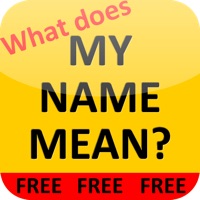
Large Hadron Collider for Android
- REQUIRES ANDROID | Published by Dzianis Azarenka on 2024-07-13 | Category: Entertainment
Rating 3.5
from 8 Votes |
$ $2.99
Large Hadron Collider is a Entertainment app by Dzianis Azarenka. The Large Hadron Collider (LHC) is the world's largest and highest-energy particle accelerator. It is expected to address some of the most fundamental questions of physics, advancing the understanding of the deepest laws of nature.
APK (Android Package Kit) files are the raw files of an Android app. Learn how to install large-hadron-collider.apk file on your phone in 4 Simple Steps:
Yes. We provide some of the safest Apk download mirrors for getting the Large Hadron Collider apk.
1. The Large Hadron Collider was built by the European Organization for Nuclear Research (CERN) with the intention of testing various predictions of high-energy physics, including testing for the existence of the hypothesized Higgs boson and of the large family of new particles predicted by supersymmetry.
2. Physicists hope that the LHC will help answer some of the fundamental open questions in physics, concerning the basic laws governing the interactions and forces among the elementary objects, the deep structure of space and time, and in particular the intersection of quantum mechanics and general relativity, where current theories and knowledge are unclear or break down altogether.
3. On 30 March 2010, the first planned collisions took place between two 3.5 TeV beams, a new world record for the highest-energy man-made particle collisions.
4. On 20 November 2009 they were successfully circulated again, with the first recorded proton–proton collisions occurring 3 days later at the injection energy of 450 GeV per beam.
5. This synchrotron is designed to collide opposing particle beams of either protons at an energy of 7 teraelectronvolts (7 TeV or 1.12 microjoules) per particle, or lead nuclei at an energy of 574 TeV (92.0 µJ) per nucleus.
6. On 10 September 2008, the proton beams were successfully circulated in the main ring of the LHC for the first time, but 9 days later operations were halted due to a serious fault.
7. This application was developed by Information Security Center Ltd, a privately held company which is NOT connected in any way with CERN, the European Organization for Nuclear Research, or experiments around the LHC.
8. The Large Hadron Collider (LHC) is the world's largest and highest-energy particle accelerator.
9. It is expected to address some of the most fundamental questions of physics, advancing the understanding of the deepest laws of nature.
10. After the 2009 winter shutdown, the LHC was restarted and the beam was ramped up to half power, 3.5 TeV per beam (i.e. half its designed energy).
11. The LHC lies in a tunnel 27 kilometres (17 mi) in circumference, as much as 175 metres (574 ft) beneath the Franco-Swiss border near Geneva, Switzerland.
Apk Mirror 1: : Download APK

|

|

|
|

|
|
|
|
|
|

|
|

|

|
|
|
|
|
|
|
|
|

|
|